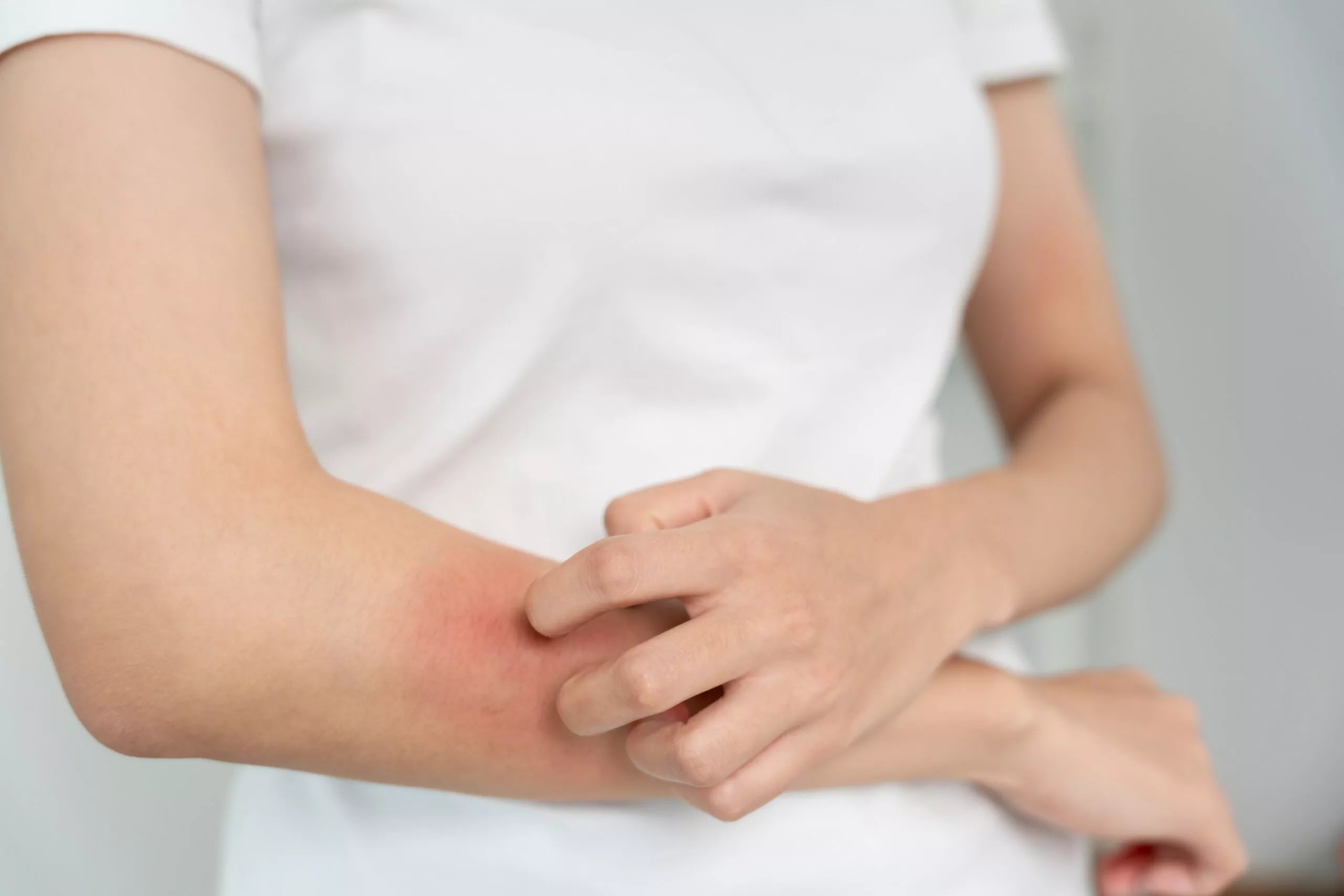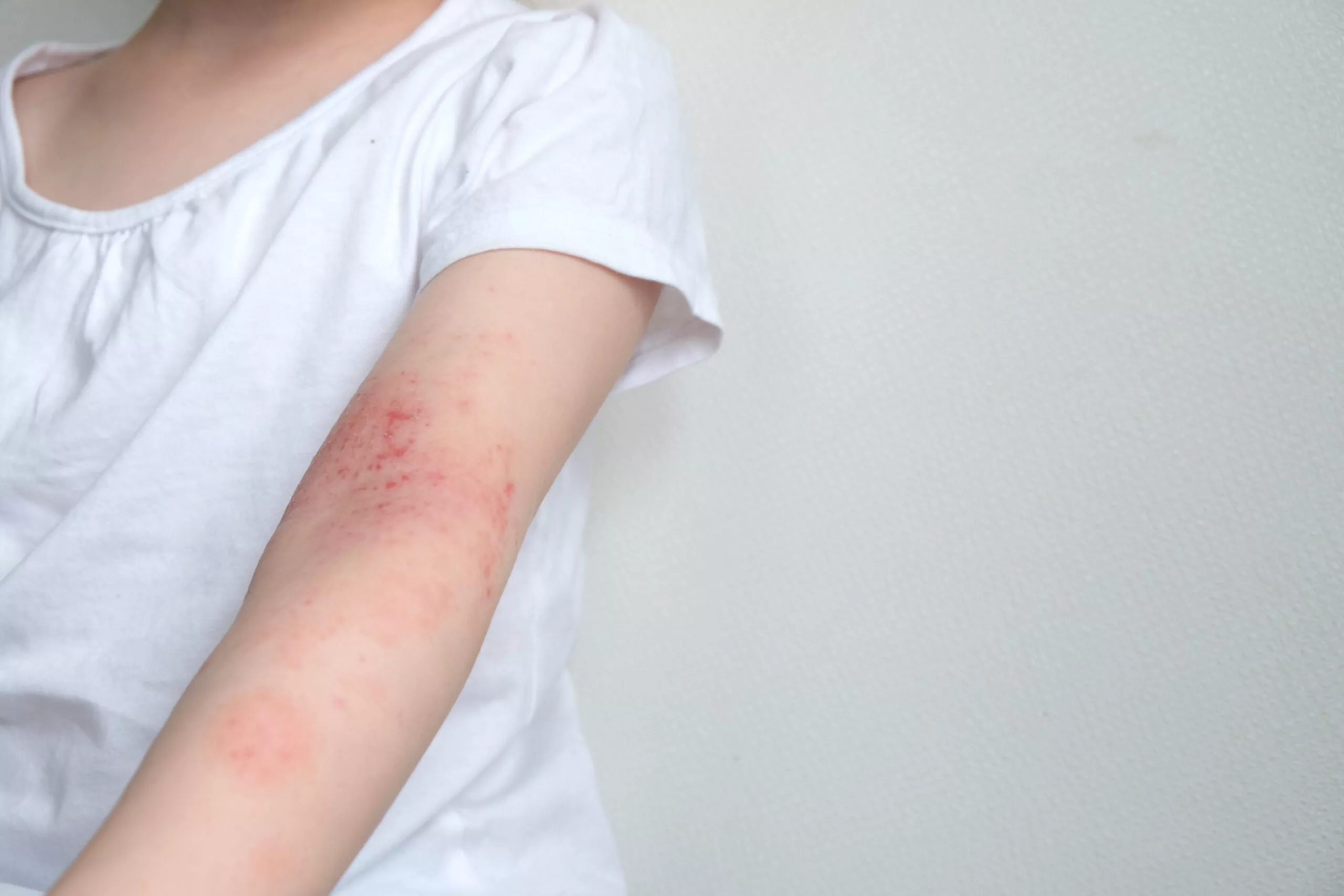What is Snakehead Disease?
Erysipelas (erysipelas) is a type of bacterial infection that affects the surface of the skin. Usually affecting the upper layers of the skin and superficial lymph vessels, this disease presents with a red, swollen and hard skin area and usually occurs suddenly with systemic symptoms such as high fever and chills.
Snailpox is a disease caused by a bacterium called Streptococcus pyogenes. The disease gets its name from the redness and swelling in the infected area, which resembles a snake bite. Red and shiny skin patches are separated by distinct borders on the skin, creating a snake skin-like appearance.
What are the Symptoms of Snake Disease?
The symptoms of snakebite are usually caused by the spread of a bacterium called Streptococcus pyogenes to the upper layers of the skin and superficial lymph vessels. The bacteria penetrate the skin barrier and enter the subcutaneous tissue, where they start the infection, multiply on the skin surface and cause inflammation. In response to this infection, the immune system sends white blood cells and other defense mechanisms to the area. This leads to symptoms such as redness, swelling and pain.
As the infection spreads, it can enter deeper tissues and the bloodstream, causing more serious complications. Infection with this bacteria causes inflammation of the skin and an immune system response. Symptoms of snakehead fever include the following:
- Red, swollen and hot skin: The infected area is usually bright red, swollen and hot to the touch. This area is separated from healthy skin by a sharp border. It is caused by increased blood flow at the site of infection and the accumulation of immune cells.
- Plaques separated by sharp borders: Infected areas are in the form of raised and tender plaques. These plaques are clearly distinguishable from healthy skin. These borders occur because the bacteria concentrate in a specific area of the skin and create inflammation there.
- High fever and chills: The disease usually comes on suddenly with high fever, chills and general weakness. The body responds systemically to the infection.
- Pain and tenderness: Severe pain and tenderness in the infected area. Patients often feel burning and itching. Inflammation caused by infection affects the nerve endings, causing pain.
- Blisters and peeling skin: Blisters and peeling skin may occur in some cases, especially in severe infections. It occurs when the cells in the skin are damaged and the regeneration process begins.
What Causes Snake Disease? What is the Reason?
Contact with infected animals or being in contaminated environments with infected animals can be a risk factor for the bacteria to enter the skin. Contaminated water, infected surfaces or direct contact with infected people are also transmission routes. The disease begins when the bacterium Streptococcus pyogenes enters through damaged areas of the skin. These bacteria penetrate the skin barrier and reach the subcutaneous tissues, where they begin to multiply rapidly. Inflammation occurs at the site of infection as a response of the immune system. This inflammation results in increased blood flow and the recruitment of immune cells to the infected area. This process leads to symptoms such as redness, swelling and warmth of the skin.
Bacteria multiply rapidly on the skin surface, releasing toxins and other inflammatory agents, causing further skin damage. This leads to the spread of infection and exacerbation of symptoms. Ringworm is usually a serious infection that requires prompt treatment and can cause complications if left untreated. These are the ways in which the bacteria that cause snakebite can enter the body:
- Skin Damage: Conditions such as cuts, scratches, ulcers or eczema create entry points for bacteria to enter the skin. These damaged areas become vulnerable to infection.
- Immune System Weakness: In people with a weakened immune system, the body cannot show adequate defense against bacteria. This makes it easier for bacteria to multiply and cause infection.
- Lymphatic obstruction Blockages in the lymphatic system lead to fluid accumulation in the infected area. This provides a favorable environment for bacteria to settle and multiply.

What is Leg Snake Disease?
Leg snakebite is an infection, usually painful, characterized by a sudden onset of redness and swelling of the skin. This leg disease is more common in people with a weak immune system. Although erysipelas is most common on the legs, it can also be prominent on the face, where it can show a butterfly-shaped distribution. If left untreated, it can also cause snakebite in the foot.
How does the snake disease go away? What is the Treatment?
With early diagnosis and the right treatment, snakebite is usually successfully treated. The course of treatment depends on the severity of the infection and the general health of the patient. Snake disease is not a disease that can be treated naturally. For this reason, methods such as snake disease stones should not be relied upon. Before starting treatment, the doctor will perform a thorough examination to assess the spread of the infection and any complications it may have caused. In cases where it is not possible to reach the health institution, doctors can make the necessary evaluation by examining the skin tissue with remote health service. If snakes are suspected, they can refer the patient to a health facility. The assessment is important to determine how fast the infection is spreading and whether it has spread to other parts of the body. Treatment options include:
- Antibiotic Use: Antibiotics are the most common treatment method. Oral antibiotics are used in mild cases, while more severe cases may require intravenous (IV) antibiotic treatment.
- Pain and Fever Control: Painkillers and antipyretics are used to control fever and pain caused by the infection. These medicines support the healing process by improving the patient’s general well-being.
- Rest and Fluid Intake: It is important that patients get enough rest and drink plenty of fluids. Resting and elevating the infected area can reduce swelling and pain. This speeds up the healing process and reduces the risk of complications.
- Care of the Infected Area: It is important to keep the infected area clean and dry to prevent the spread of skin infection. Wound care and dressing can be done if necessary. Good hygiene of the infected area reduces the spread of infection and the risk of reinfection.
- Monitoring Complications: Hospitalization may be required in case of spread of snakebite or development of complications. In this case, intravenous antibiotic therapy and other supportive treatments are administered. The patient’s condition is closely monitored and necessary treatment interventions are made.
- Prevention of Relapses: People at risk of recurrent infections may require long-term low-dose antibiotic treatment. Patients with lymphatic drainage problems or chronic skin diseases should be informed about preventive treatment and skin care. It reduces the risk of recurrence of infection and prevents long-term complications.
Starting treatment early is critical to prevent the spread of infection and serious complications. Carefully follow the doctor’s recommendations during treatment and seek medical advice if symptoms persist or worsen. If snail fever is left untreated, serious complications can arise. Infection can spread to deeper tissues, leading to serious conditions such as cellulitis, abscesses and necrotizing fasciitis. Snake in the arm can also cause pain and limitation of movement. If the bacteria enter the bloodstream, it can be life-threatening, increasing the risk of sepsis. These complications occur when bacteria multiply rapidly inside the body and the immune system is weakened. Prompt and appropriate treatment prevents these complications and helps to control the infection.
Does Snake Sickness Recur?
Some people may experience a recurrence of the disease. This recurrence is particularly common in people with certain health conditions. For example, individuals with lymphatic system problems, such as lymphedema or chronic swelling, are at high risk of recurrence of infection. Lymphatic blockages allow bacteria to multiply easily in the infected area and cause re-infection.
People with diabetes are also more prone to snake infections. Diabetes weakens the immune system and slows down the healing process of the skin. This makes it easier for bacteria to enter the skin and cause infection. People with persistent skin damage (frequent cuts, scratches or chronic skin diseases) may also experience recurrent snake infections. These damaged skin areas become entry points for bacteria.
Long-term low-dose antibiotic treatment can be used to prevent recurrences. It can be particularly effective in people at high risk of recurrent infections. Proper care of the infected area, personal hygiene and prompt treatment of skin wounds also reduce the risk of re-infection.
Which Doctor Should We Go to for Snake Disease?
A dermatologist or an infectious disease specialist should usually be consulted when symptoms of snake disease appear. Dermatologists specialize in the diagnosis and treatment of skin-related diseases and can assess the effects of infection on the skin.
Infectious disease specialists are experts in managing bacterial infections and their treatment. It is also a good start to consult a family doctor first. The family doctor will refer you to the appropriate specialist if necessary.
To diagnose snail fever, the doctor performs a physical examination and examines the infected area. The doctor assesses red, swollen and hot areas on the skin and observes plaques separated by sharp borders. They also listen to the patient’s medical history and symptoms. For a definitive diagnosis, samples from the infected area can be sent to the laboratory and cultured for bacteria. These tests are important to determine which bacteria caused the infection. Blood tests may also be performed if necessary.
Starting treatment early is critical to prevent the spread of infection and serious complications. For this reason, it is best to consult a specialist about the symptoms and treatment methods. Carefully follow the doctor’s recommendations during treatment and seek medical advice if symptoms persist or worsen.





